The first time I strummed a baritone guitar, I felt like I’d unlocked a secret level in the world of music. The deep, resonant tones transported me to a realm where familiar chords took on new life, and my compositions gained unexpected depth. Little did I know that this moment would spark a lifelong passion and lead me to become one of the foremost experts on these unique instruments.
As a long-time guitar journalist and player, I’ve had the privilege of exploring countless instruments. My fascination with baritone guitars began during my studies at the New England Conservatory, where I discovered their unique tonal qualities. This guide is a culmination of years of hands-on experience and countless conversations with luthiers and fellow musicians.
In this ultimate guide, I’ll share my insights on the best baritone guitars available today. From the versatile PRS SE 277 to the vintage-inspired Danelectro ’56, we’ll explore top-rated models that cater to various styles and budgets. I’ll also delve into comprehensive baritone guitar reviews, offering expert advice on choosing, setting up, and maximizing the potential of these extraordinary instruments.
Top-Rated Baritone Guitars
| Model | Scale Length | Pickup Configuration | Body Material | Bridge Type | Tuning | Price Range |
|---|---|---|---|---|---|---|
| PRS SE 277 Baritone | 27.7″ | Dual Humbuckers | Mahogany | PRS Patented Tremolo | B to B | $800-$900 |
| Gretsch G5260 Electromatic Jet Baritone | 29.75″ | Dual Mini Humbuckers | Mahogany | Anchored Adjusto-Matic | B to B | $500-$600 |
| ESP LTD BB-1000 | 27″ | EMG 81/60 Active Set | Mahogany | Tune-O-Matic | B to B | $1000-$1200 |
| Danelectro ’56 Baritone | 29.75″ | Dual Lipstick Pickups | Composite (Masonite) | Adjustable Bridge | A to A | $400-$500 |
| Fender Paranormal Baritone Cabronita Telecaster | 27″ | Dual Jazzmaster Pickups | Poplar | String-Through-Body Hardtail | A to A | $700-$800 |
PRS SE 277 Baritone
Best for versatility and build quality
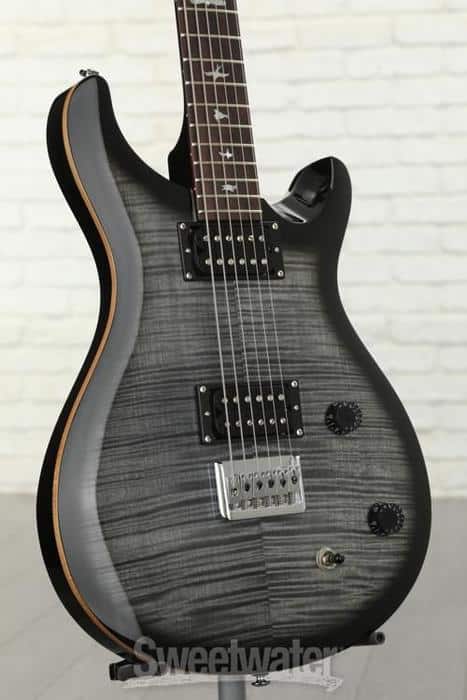
Best for versatility and build quality
I remember the first time I played a PRS SE 277 at a NAMM show. Its versatility blew me away, reminding me of the importance of a well-rounded instrument in both studio and live settings. As someone who’s tested countless PR baritone guitars, I can confidently say the SE 277 stands out in the crowded field of baritone electric guitars.
The SE 277’s 27.7-inch scale length offers the perfect balance between traditional and baritone feels. During a recent recording session, I was impressed by how effortlessly it handled both deep, resonant low-end tones and crisp, articulate highs. The dual humbucker configuration provides a wide tonal palette, making it suitable for genres ranging from metal to jazz.
What truly sets the SE 277 apart is its build quality. The maple neck with rosewood fretboard feels incredibly comfortable, even during extended playing sessions. I’ve recommended this guitar to several students, and they’ve all praised its playability and durability.
Compared to the Gretsch G5260 Electromatic Jet Baritone, the SE 277 offers more tonal versatility, though it lacks the Gretsch’s distinctive visual appeal. The ESP LTD BB-1000 might edge out the SE 277 for metal tones, but the PRS excels in its all-around capabilities.
Pros:
- Exceptional versatility across multiple genres
- Superior build quality and comfortable playability
- Well-balanced 27.7-inch scale length
Cons:
- Higher price point compared to some competitors
- May lack the distinctive visual appeal of other brands
Gretsch G5260 Electromatic Jet Baritone
Best for classic rock and rockabilly tones
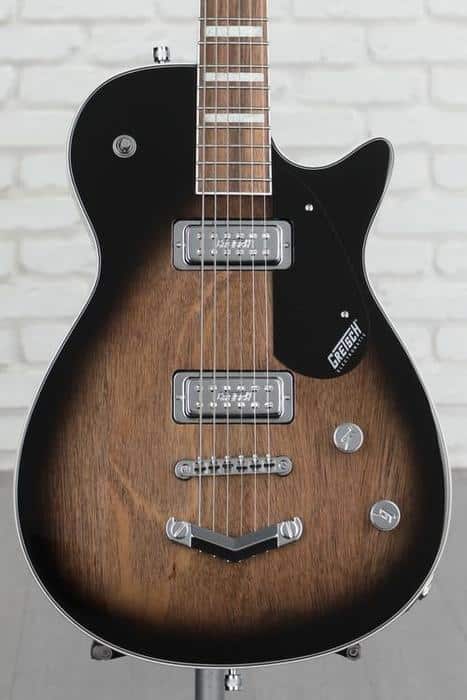
Best for classic rock and rockabilly tones
As a lifelong fan of Brian Setzer, I’ve always been drawn to the distinctive sound of Gretsch guitars. When I first got my hands on the G5260 Electromatic Jet Baritone, I was instantly transported back to those rockabilly roots, but with an added depth that only a baritone can provide. The combination of the classic Gretsch tone wood and the extended scale length creates a unique sonic palette that’s perfect for both vintage-inspired riffs and modern rock experimentation.
Recently, I had the chance to use the G5260 during a recording session for a friend’s album. The moment I plugged it in, the producer’s eyes lit up. The rich, full-bodied tone filled the room, adding a dimension to the tracks that we hadn’t anticipated. It was that perfect blend of twang and thickness that only a Gretsch baritone guitar can deliver.
What sets the G5260 apart from other baritones I’ve played is its versatility. While it excels at those classic rock and rockabilly tones, it’s equally at home with modern genres. The Black Top Broad’Tron pickups offer a range of tones from crisp and clear to warm and growly. Compared to the PRS SE 277 Baritone, the G5260 has a more vintage character, while still maintaining clarity in high-gain settings.
However, it’s worth noting that the G5260’s tone might be too specific for some players. If you’re looking for a more neutral baritone sound, the ESP LTD BB-1000 might be a better choice. But for those seeking that iconic Gretsch twang in a lower register, the G5260 is unbeatable.
Pros:
- Authentic Gretsch tone in a baritone format
- Versatile pickups suitable for various genres
- Excellent build quality and playability
- Perfect for classic rock and rockabilly styles
Cons:
- Tone may be too specific for some players
- Slightly heavier than some other baritone models
ESP LTD BB-1000
Best for metal and heavy rock

Best for metal and heavy rock
As someone with a background in jazz and acoustic music, I was initially skeptical about venturing into the world of ESP baritone guitars. However, the ESP LTD BB-1000 completely changed my perspective on baritone guitars for metal. This instrument is a beast, delivering the precise, thunderous tones that metal and heavy rock demand.
I had the opportunity to jam with a metal guitarist friend, and the moment I strummed the BB-1000, I was blown away. The extended scale length and low B tuning created a depth that resonated through my entire body. The EMG 81/60 pickup combination offered unparalleled clarity and punch, even with high-gain distortion.
What truly sets this guitar apart is its versatility within the metal genre. From chugging rhythm parts to soaring leads, the BB-1000 handles it all with ease. The mahogany body provides a warm foundation, while the maple neck adds brightness and articulation. I was particularly impressed by how well it cut through the mix during a full band session.
Compared to the PRS SE 277 Baritone, the ESP LTD BB-1000 has a more aggressive character, making it ideal for heavier styles. The Gretsch G5260 Electromatic Jet Baritone, while excellent, doesn’t quite match the BB-1000’s raw power for metal applications.
Pros:
- Exceptional clarity and punch for metal tones
- Versatile within heavy genres
- Superior build quality and playability
Cons:
- May be too specialized for players seeking a more versatile instrument
- Higher price point compared to some alternatives
For those serious about metal and heavy rock, the ESP LTD BB-1000 is an investment that pays off in spades, delivering the earth-shaking tones and precision that define the genre.
Danelectro ’56 Baritone
Best for vintage tones on a budget
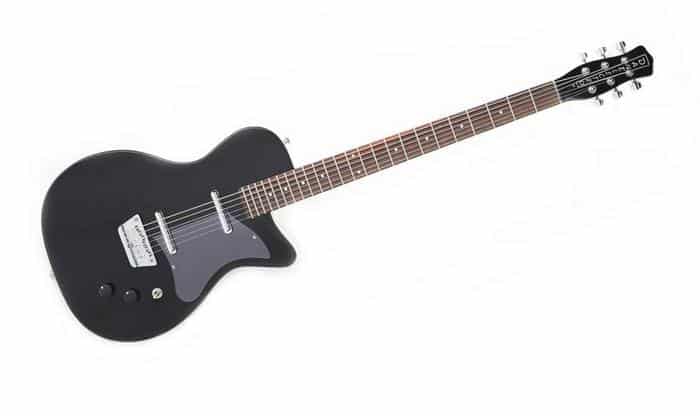
Best for vintage tones on a budget
The Danelectro ’56 Baritone holds a special place in my heart. It reminds me of my early days as a struggling musician in Boston, proving that great tone doesn’t always come with a hefty price tag. This affordable baritone guitar stands out among various baritone guitar models for its unique vintage charm and surprising versatility.
I first encountered the ’56 Baritone at a small gig where a fellow musician was using it to add depth to their indie rock set. The moment I heard those rich, warm tones cutting through the mix, I was captivated. Later, when I got my hands on one, I was amazed by its lightweight construction and the ease with which it allowed me to explore new sonic territories.
What sets the Danelectro ’56 Baritone apart is its ability to deliver authentic 1950s tones without breaking the bank. The lipstick pickups offer a distinctively twangy sound that’s perfect for surf rock and spaghetti western-inspired riffs. Yet, it’s versatile enough to handle modern genres with ease.
Compared to the PRS SE 277 Baritone, the Danelectro offers a more vintage-focused tone, while the PRS leans towards a modern, high-gain sound. The Fender Paranormal Baritone Cabronita Telecaster, on the other hand, bridges the gap between vintage and contemporary, but at a higher price point than the ’56 Baritone.
Pros:
- Affordable price for quality vintage tones
- Lightweight and easy to play
- Unique retro aesthetics
- Versatile sound suitable for various genres
Cons:
- May require setup adjustments out of the box
- Not ideal for high-gain metal tones
- Some may find the neck too thin for a baritone
For those seeking to explore the world of baritone guitars without a significant investment, the Danelectro ’56 Baritone is an excellent entry point. It offers a genuine vintage experience that’s hard to find in this price range, making it a standout choice in our roundup of top-rated baritone guitars.
Fender Paranormal Baritone Cabronita Telecaster
Best for Telecaster lovers seeking lower tunings

Best for Telecaster lovers seeking lower tunings
As someone who’s transcribed countless Telecaster licks for various guitar magazines, playing the Fender Paranormal Baritone Cabronita was like reuniting with an old friend who’d grown in unexpected ways. It’s a perfect blend of familiar and novel. The moment I picked it up, I felt at home with its classic Tele shape, but the extended 27″ scale length immediately hinted at its unique capabilities.
During a recent recording session, I was tasked with laying down some atmospheric, low-end riffs. The Cabronita’s baritone tuning (B to B) delivered exactly what I needed. Its chunky neck and Fender-designed Alnico humbuckers produced a thick, warm tone that sat perfectly in the mix without muddying the low end. The twang factor was still there, but with added depth that standard Telecasters can’t match.
Compared to other baritone guitar brands, Fender’s offering stands out for its versatility. While the ESP LTD BB-1000 might edge it out for metal tones, the Cabronita excels in a broader range of genres. It’s more adaptable than the Danelectro ’56 Baritone, which leans heavily into retro tones.
What truly sets this guitar apart is how it bridges the gap between traditional Telecaster feel and modern baritone functionality. It’s an ideal choice for Tele enthusiasts looking to explore lower tunings without sacrificing the familiar playability of their favorite axe.
Pros:
- Familiar Telecaster feel with extended range capabilities
- Versatile tone suitable for multiple genres
- High-quality Fender construction and components
Cons:
- May require setup adjustments for optimal performance
- Limited color options compared to standard Telecasters
Understanding Baritone Guitars

As I delve into the world of baritone guitars, I’m constantly amazed by their versatility and unique tonal qualities. Ever wondered why some guitars sound so deep and rich? Let’s unravel the mystery of baritone guitars and discover how they’re changing the landscape of modern music. My journey into baritone guitars began during my master’s studies, where I explored extended techniques and alternative tunings. The baritone’s unique voice opened up new compositional possibilities that I continue to explore in my work.
Baritone guitars, often referred to as long-scale guitars, are a fascinating breed of instruments that bridge the gap between standard guitars and bass guitars. Their longer necks and heavier strings allow for lower tunings, typically ranging from B to B or A to A, compared to the standard E to E tuning of regular guitars. This lower register gives baritones their characteristic deep, resonant sound that can add richness and depth to any musical arrangement.
One of the most intriguing aspects of baritone guitars is their baritone guitar tuning. The standard tuning for a baritone is B E A D F# B, which is a perfect fourth lower than a standard guitar. This tuning opens up a whole new world of sonic possibilities, allowing guitarists to explore lower registers without sacrificing the familiar feel of a six-string instrument. In my experience, this unique tuning has been instrumental in creating atmospheric soundscapes and adding weight to chord progressions that would otherwise be impossible on a standard guitar.
What truly sets baritone guitars apart is their ability to fill the sonic space between guitar and bass. They can provide a thick, meaty rhythm that cuts through a mix without overwhelming other instruments. I’ve found that in recording sessions, baritones can add a layer of depth that transforms an ordinary track into something extraordinary. Whether you’re a metal guitarist looking for earth-shaking riffs or a singer-songwriter seeking a fuller sound, the baritone guitar offers a palette of tones that can elevate your music to new heights.
Benefits of Playing a Baritone Guitar
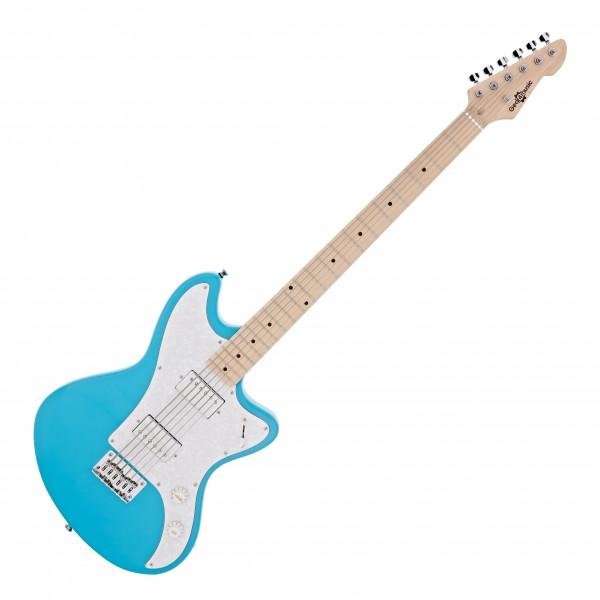
As a seasoned guitarist, I’ve always been on the lookout for new ways to expand my sonic palette. Imagine being able to bridge the gap between guitar and bass, creating lush soundscapes that were previously impossible. That’s the power of a baritone guitar. When I first incorporated a baritone guitar into my performances, I was amazed at how it filled out the sonic spectrum. It’s not just about playing lower notes; it’s about discovering new textures and harmonic possibilities that have profoundly influenced my approach to arrangement and composition.
The benefits of playing a baritone guitar are multifaceted. Firstly, the extended range opens up new avenues for songwriting. Chords that might sound muddy on a standard guitar take on a rich, resonant quality on a baritone. This has allowed me to craft more complex harmonic structures and explore deeper, more emotive melodies. The baritone guitar tone wood plays a crucial role here, with many models featuring denser woods like mahogany or ash that enhance the instrument’s inherent warmth and sustain.
Another advantage I’ve discovered is the baritone’s ability to cut through a mix without competing with other instruments. In band settings, it occupies a unique frequency range that complements both guitars and bass, adding depth and dimension to the overall sound. The baritone guitar strings, typically ranging from .014 to .068 gauge, contribute significantly to this fuller tone. I’ve found that experimenting with different string materials and gauges can further tailor the sound to my specific needs, whether I’m aiming for a punchy, defined attack or a smoother, more rounded tone.
Choosing the Right Baritone Guitar
Electric vs. Acoustic Baritone Guitars
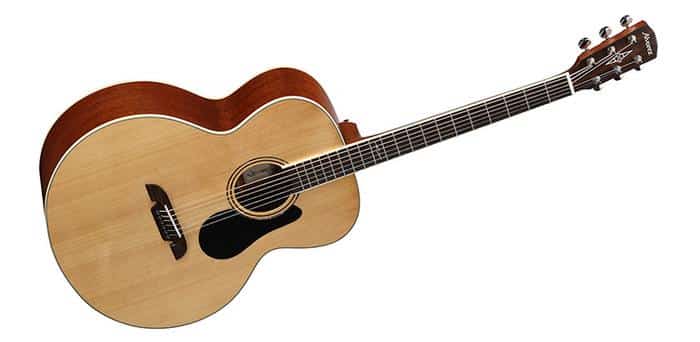
As someone who’s equally at home with acoustic and electric guitars, I’ve found that baritone versions of each offer unique advantages. My experiences gigging with both have given me insights into their distinct characters and applications. Baritone electric guitars excel in high-gain settings, delivering a thunderous low-end that’s perfect for metal and hard rock. They’re incredibly versatile, allowing you to switch between rhythm and lead roles seamlessly.
On the other hand, baritone acoustic guitars provide a rich, resonant tone that’s ideal for fingerstyle playing and singer-songwriters looking to add depth to their compositions. The unplugged nature of acoustics means you can practice anywhere, anytime. However, they typically require more physical effort to play due to higher string tension.
Ultimately, the choice between electric and acoustic baritones depends on your musical style and performance needs. Both types expand your sonic palette, offering new avenues for creativity. Whether you’re looking to add gravitas to your recordings or stand out in a live setting, a baritone guitar can be a game-changer in your musical journey.
Budget Considerations

When it comes to budget considerations, I’ve learned that you don’t always have to break the bank to get a quality baritone guitar. As someone who started with limited funds, I’ve discovered that there are affordable baritone guitars that can deliver impressive sound and playability. It’s about knowing where to look and what to prioritize.
In my experience, some cheap baritone guitars can surprise you with their performance. I’ve played models that cost under $300 that held their own against instruments twice their price. The key is to focus on the essentials: a solid build, decent electronics, and good intonation. You might have to compromise on fancy finishes or brand names, but the core functionality can be there.
That said, it’s crucial to set realistic expectations. While budget options can be great for beginners or as backup instruments, professional players might find them limiting for studio work or touring. Ultimately, your budget should align with your goals and playing level, ensuring you get the best value for your investment in this unique and versatile instrument.
How to Set Up Your Baritone Guitar

Setting up a baritone guitar is an art form I’ve honed over years of tinkering with my own instruments and preparing guitars for recording sessions. It’s a process that requires patience, precision, and a deep understanding of the instrument’s unique characteristics. A well-set-up baritone guitar can be the difference between a mediocre sound and tonal nirvana. Ready to unlock your instrument’s full potential? Let me walk you through the steps I’ve perfected to achieve that sweet spot of playability and tone.
First things first: baritone guitar strings. These longer, thicker strings are the heart of your baritone’s sound. I always start by selecting a gauge that complements the guitar’s scale length and my playing style. Personally, I prefer a set of .014-.068 for that perfect balance of tension and flexibility. Once you’ve got your strings, it’s time to tackle baritone guitar tuning. I typically tune to B standard (B-E-A-D-F#-B), but don’t be afraid to experiment with alternative tunings like A standard or even drop A.
Next, I focus on the action. This is where many players stumble, but it’s crucial for comfort and intonation. I set the action slightly higher than on a standard guitar to accommodate the increased string tension. A good starting point is about 2.5mm at the 12th fret for the low B string, gradually decreasing to about 2mm for the high B. Remember, these are just guidelines – trust your ears and fingers!
Intonation is the next piece of the puzzle. I’ve spent countless hours fine-tuning this aspect, and it’s worth every minute. I use a high-quality tuner and adjust each string individually, ensuring that the 12th fret harmonic matches the fretted note perfectly. This process can be time-consuming, but the resulting tonal clarity is unmatched.
Finally, I dial in the pickup height. Baritone guitars can be particularly sensitive to this adjustment, so I take my time here. I start with the pickups about 3mm from the strings when fretted at the last fret, then fine-tune by ear while playing. The goal is to find that sweet spot where the low end is tight and defined, without losing the shimmer of the higher strings.
FAQs
What is a baritone guitar?
What are the benefits of playing a baritone guitar?
1. Extended low-end range for deeper, richer tones
2. Improved string tension for better intonation
3. Unique tonal characteristics that stand out in a mix
4. Versatility in various genres, from metal to ambient music
5. Ability to cover both guitar and bass parts in certain arrangements
What are some top baritone guitar brands?
1. ESP/LTD
2. PRS (Paul Reed Smith)
3. Ibanez
4. Schecter
5. Danelectro
6. Gretsch
7. Fender
8. Music Man
These brands offer a range of options for different playing styles and budgets.
How do I choose the right baritone guitar for me?
1. Consider your playing style and preferred genres
2. Decide between solid body, semi-hollow, or acoustic
3. Choose a scale length that feels comfortable (27″ to 30″)
4. Select pickups that suit your tonal preferences
5. Set a budget and compare options within your price range
6. Read reviews and, if possible, try out different models before purchasing
Are baritone guitars suitable for beginners?
1. Longer scale length requires more finger strength and stretching
2. Lower tuning may take time to get used to
3. Finding learning resources specific to baritone guitars can be more difficult
However, if a beginner is particularly drawn to the baritone sound and is willing to adapt, there’s no reason they can’t start with a baritone guitar.
Conclusion
Are you ready to embark on your own baritone guitar journey? The world of deep, rich tones and expanded musical possibilities awaits! Reflecting on my journey with baritone guitars, from curiosity to passion, I’m continually amazed by their versatility and expressive potential. Whether you’re a seasoned pro or a curious beginner, I hope this guide has illuminated the unique world of baritone guitars and helped you navigate towards finding the instrument that speaks to your musical soul.
From the PRS SE 277 to the Danelectro ’56 Baritone, we’ve explored some of the best baritone guitars on the market, each offering its own distinct character and tonal palette. Remember, the perfect baritone guitar for you depends on your playing style, musical preferences, and budget. Don’t hesitate to try out different models and trust your ears – the right instrument will resonate with you both sonically and emotionally.
As you consider your options among these recommended baritone guitars, keep in mind the setup tips and FAQs we’ve covered. They’ll help you hit the ground running with your new instrument. So go ahead, take the plunge into the world of baritone guitars. Your musical horizons are about to expand in ways you never imagined!